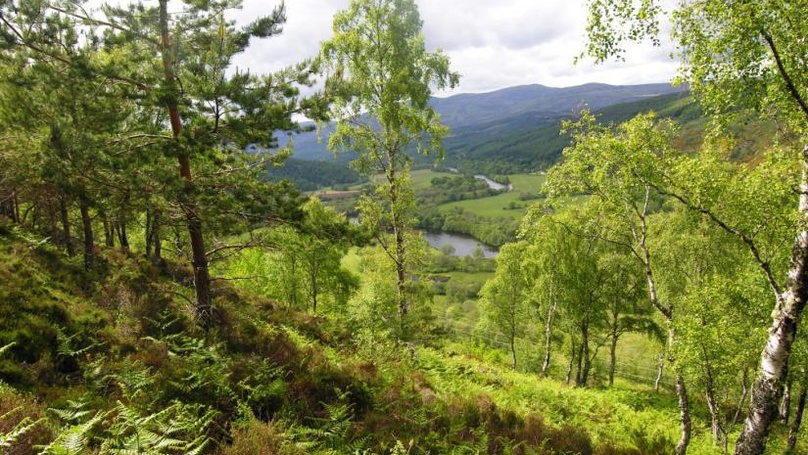The Forestry and Land Management (Scotland) Bill, introduced on the 10th of May 2017, is on the brink of repealing the Forestry Act 1967 and as such is currently much discussed throughout the industry.
Part 3 s.9 12 of the Bill deals with the proposed 100% devolution of power from the Forestry Commission to the Scottish Government. Under the Forestry Act 1967, Forestry Commissioners were required to promote the interests of forestry and the development of afforestation as well as the production and supply of timber and other forest products. As remits go, the forestry industry has been well served by this objective and it is unsurprising that there are murmurs to the effect of if it ain't broke, don't fix it.'
The Forestry Commission has served a lengthy term as a satisfactory regulatory body and many feel that this success is attributable in part to their relative freedom from political pressures, allowing for the long term vision required. Further to this, the Forestry Commission has played a large part in ensuring that despite political upheaval the cross border arrangements so essential to the industry have remained open, guaranteeing that forestry remains a UK wide concern.
In response to concerns over this devolution of power the Scottish Government has proposed that a Chief Forester be appointed who could communicate and engage within the industry on a professional level helping to ensure that forestry remains the focus. The plan is to replace the role of the Forestry Commission with a dedicated Forestry Division within the Environment and Forestry Directorate, and the FES (Forest Enterprise Scotland) which currently manage Scotland's National Forest Estate (NFE) will become a new executive agency of the Scottish Government called Forestry and Land Scotland.'
Part 2 Chapter 1 of the Bill places a duty on the Scottish Ministers to produce a Forestry Strategy promoting sustainable forest management and setting out proposals of how other land' could be managed for sustainable development. Under the new legislation, the Scottish Government will be responsible for the future of Scotland's National Forest Estate (NFE), which encompasses approximately 650,000 hectares of land and makes up 32% of the country's woodlands. Two thirds of this land is actual forest while a third is classed as other land.' The 1967 Act was restrictive in its stipulation that all activities on the NFE must be tree related but the new Act will allow for non-tree related development to take place. The worry for the forestry industry is that the focus may be on schemes with a short term profitability which will ultimately mean that potential land for afforestation is lost forever.
However, as the portion of other land' under the NFE is just as likely to be mountain tops and foreshore, as it is to be land with potential for planting, agriculture or development, a more lucid definition of other land' is required to provide confidence within the industry that the NFE is not going to be stripped to satisfy the Government's shorter term social and economic objectives and ambitions.
Part 3 s.15 17 in the Bill deals with acquisition, compulsory purchase and the disposal of land. This forms one of the most contentious parts of the Bill as it outlines the Scottish Ministers' proposals to increase their powers to use Compulsory Purchase Orders (CPO) to acquire land for both sustainable forest management and sustainable development. This proposal has been received with some trepidation and industry representatives have been quick to point out that Forestry in Scotland and the UK has always been run on a culture of co-operation. As the Forestry Commission has never used or abused its powers of compulsory purchase it is easy to see why the industry would question the Scottish Government's motive here.
Guidance has previously been published, separate to this Bill setting out the Scottish Government's policies on the use of CPOs, the crux of which appears to be, that the Scottish Ministers can acquire land from unwilling landowners where there is a strong enough case that it is in the public interest to do so. As with the Land Reform (Scotland) Act 2016, the definition of sustainable development still has rather blurry edges but any future definition attributed will need to avoid a clash with guidance on the meaning of sustainable forest management' from the 1993 pan-European Ministerial Conference on the protection of Forests in Europe which reads as follows;
The stewardship and use of forest lands in a way and at a rate that maintains their biodiversity, productivity, regeneration capacity, vitality and their potential to fulfil now and in the future relevant ecological, economic and social functions at local, national and global levels and that does not cause damage to other ecosystems.
This may provide some comfort to those concerned that the proposals within the Bill form a potential threat to planting, as sustainable development' should not compromise sustainable forest management,' however much more clarity is needed if the industry is to avoid being undermined by legislation.
The call for views on Stage One of the draft Bill is open until the 16th August, and industry representatives Confor (Confederation of Forest Industries (UK)) have prepared a response to this highlighting the need for amendment to a number of the sections addressed in this article.
Galbraith has a team of forestry specialists based in Inverness and Perth who would be happy to discuss any queries you have on these issues.
